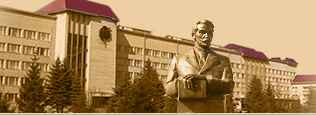ASSESMENT OF ANTROPOGENIC IMPACT ON “LISOVA PISNIA” POTETENTIAL NATIONAL PARK GEOSYSTEM.
The main types and consequences of anthropogenic impacts on landscapes of Turia and Stokhid middle interfluve which are considered by the author as a potential national park “Lisova Pisnia” analyzed in the article. This is the least mastered the least populated and most wooded part of the Kovel district, Volyn region. Besides this area does not cross the roads and railways. Studied landscapes are characterized by greater biological and landscape diversity, humanistic significant potential associated with the genius of a well-known writer and poetess Lesya Ukrainka. Organization of National Park requires a qualitative and quantitative assessment of anthropogenic changes and environmental state of landscapes. Particular attention is paid to ecological and economic analysis of the territory, the effects of amelioration and agricultural activity, the current state of landscapes. By the method of B. Kochurova and G. Ivanova that takes into account complex of factors affecting the natural systems, author conducted a ranking of territory of potential national park and the distribution of land categories. Thus the land with the least anthropogenic pressure is 57.2%, and the land with the largest and highest anthropogenic pressure – only 12.8% of the potential national park territory. Also identified indicators of anthropogenic pressure and natural protection of geosystem by grading and absolute and relative anthropogenic pressure coefficients were calculated. The author not only assessed the agricultural development and afforestation of the research area, but also calculated a natural protection territory coefficient, – its ability to resist anthropogenic influence and maintain the ecological balance. All of the above indicators point to favorable conditions for the organization of the proposed “Lisova Pisnia” National Park.
Keywords: human pressure, geosystem, national park, drainage melioration.
References:
- Hrodzynskyi D. M. Osnovy landshaftnoi ekolohii /D. M. Hrodzynskyi. – K.: Lybid. – 1999. – 224 s. – ISBN 5-325-00377-1.
- Koinova I. B. Antropizatsiia landshaftnykh system zakhidnoi chastyny Volynskoho Polissia. // Visn. Lviv. un-tu. Ser. heohraf. – L.: Svit, 2000. – Vyp. 26. – S. 30-34.
- Kochurov B. Y. Otsenka ekoloho-khoziaistvennoho sostoianyia terytoryy admynystratyvnoho raiona / B .Y. Kochurov, Yu. H. Yvanov // Heohafyia y pryrodopolzovanye. – 1987. – №4. – S. 49-54.
- Kochurov B. Y. Ekodyahnostyka y sbalansyrovanoe razvytye: Uchebnoe posobye. – M.-Smolensk: Medzhenta. – 2003. – 384 s.
- Materialy Kovelskoho upravlinnia osushuvalnykh system Volynskoi HHMP. Revchuk B., Veremchuk B. Svodnыi nauchno-tekhnychechkyi otchet o melyoratyvnom sostoianyy Krychevychskoi osushytelnoi systemy Volynskoi oblasty. – Kovel. – 1987. – 40 s.
- Pro Prohramu reabilitatsii terytorii zabrudnenykh unaslidok viiskovoi diialnosti na 2002-2015 rr. – Rezhym dostupu: http://zakon2.rada.gov.ua/laws/show/916-2001-%D0%BF
